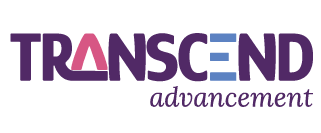How Data-Driven Decision Making Can Revolutionize Your Fundraising Strategy
The Case for More than Just Database “Management”
In today’s nonprofit landscape, gut instincts aren’t enough—successful fundraising requires smart, data-driven decision-making. When used effectively, data can help you target the right donors, optimize your fundraising campaigns, and improve donor retention.
But many organizations struggle to collect, analyze, and act on their data effectively. In this guide, we’ll explore how data-driven decision-making can revolutionize your fundraising efforts and drive stronger, more sustainable results.
Step 1: Define Your Key Fundraising Metrics
Before diving into data, you need to determine what success looks like for your organization. Some essential fundraising metrics to track include:
Donor Retention Rate – What percentage of last year’s donors are giving again?
Lifetime Value of a Donor (LTV) – How much does the average donor contribute over their lifetime?
Cost Per Dollar Raised (CPDR) – How much are you spending to bring in each dollar of donations?
Conversion Rates – What percentage of prospects turn into donors?
By establishing clear benchmarks, you can track progress and identify areas for improvement.
Step 2: Use Data to Identify and Target the Right Donors
Data can help you refine who you should be engaging with and how. A well-managed donor database allows you to:
Segment donors by giving behavior (major gifts, recurring gifts, first-time gifts, lapsed donors).
Analyze engagement trends (who attends events, opens emails, or volunteers regularly).
Use predictive analytics to identify donors who may be ready to upgrade their giving.
For example, if data shows that donors who attend events give larger gifts, you can tailor follow-up campaigns specifically for event attendees.
Step 3: Personalize Your Fundraising Appeals
Generic fundraising appeals don’t resonate with donors as well as personalized ones do. Use data to:
Customize email and direct mail campaigns based on a donor’s giving history.
Acknowledge previous contributions and show donors their impact.
Offer suggested gift amounts based on past giving patterns.
Donors who feel recognized and valued are far more likely to continue their support.
Step 4: Optimize Your Fundraising Campaigns with A/B Testing
A/B testing (also known as split testing) allows you to compare two different versions of a campaign element to see which performs better. You can test:
Email subject lines to see which gets more opens.
Call-to-action language to determine which drives more donations.
Website donation form designs to see which leads to more completed gifts.
By analyzing the results, you can continuously refine your campaigns for maximum impact.
Step 5: Use Real-Time Data to Make Agile Decisions
Instead of waiting until the end of a campaign to evaluate performance, monitor key metrics in real time. If a campaign isn’t performing as expected, you can:
Adjust your messaging or target audience.
Shift resources to the most effective channels.
Increase outreach to lapsed donors or new prospects.
This agile approach ensures you’re making data-driven decisions when they matter most.
Step 6: Train Your Team to Be Data-Driven
To fully integrate data into your fundraising strategy, your entire team needs to be on board. Offer training on:
How to interpret key fundraising metrics.
How to use CRM tools for donor segmentation and analysis.
How to track and measure campaign success.
A data-savvy team can unlock new opportunities and improve long-term fundraising results.
Let’s Leverage Data for Better Fundraising Results
At TRANSCEND Advancement, we specialize in helping nonprofits turn data into actionable fundraising strategies. Whether you need help with CRM optimization, donor analytics, or campaign tracking, we can provide expert guidance to help you raise more, more efficiently. Ready to harness the power of data? Let’s optimize your fundraising strategy.
